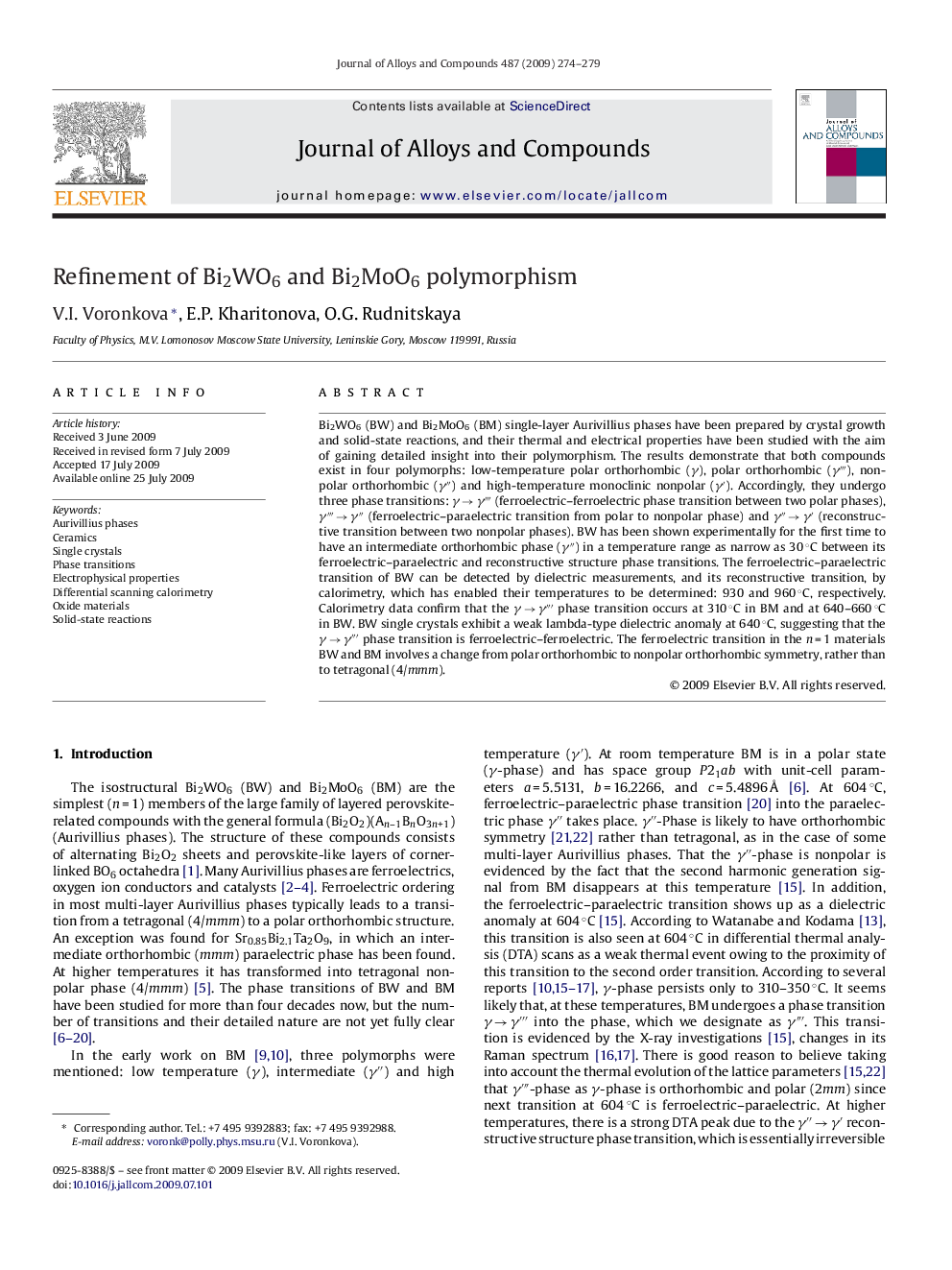| Article ID | Journal | Published Year | Pages | File Type |
|---|---|---|---|---|
| 1621764 | Journal of Alloys and Compounds | 2009 | 6 Pages |
Bi2WO6 (BW) and Bi2MoO6 (BM) single-layer Aurivillius phases have been prepared by crystal growth and solid-state reactions, and their thermal and electrical properties have been studied with the aim of gaining detailed insight into their polymorphism. The results demonstrate that both compounds exist in four polymorphs: low-temperature polar orthorhombic (γ), polar orthorhombic (γ‴), nonpolar orthorhombic (γ″) and high-temperature monoclinic nonpolar (γ′). Accordingly, they undergo three phase transitions: γ → γ‴ (ferroelectric–ferroelectric phase transition between two polar phases), γ‴ → γ″ (ferroelectric–paraelectric transition from polar to nonpolar phase) and γ″ → γ′ (reconstructive transition between two nonpolar phases). BW has been shown experimentally for the first time to have an intermediate orthorhombic phase (γ″) in a temperature range as narrow as 30 °C between its ferroelectric–paraelectric and reconstructive structure phase transitions. The ferroelectric–paraelectric transition of BW can be detected by dielectric measurements, and its reconstructive transition, by calorimetry, which has enabled their temperatures to be determined: 930 and 960 °C, respectively. Calorimetry data confirm that the γ → γ‴ phase transition occurs at 310 °C in BM and at 640–660 °C in BW. BW single crystals exhibit a weak lambda-type dielectric anomaly at 640 °C, suggesting that the γ → γ‴ phase transition is ferroelectric–ferroelectric. The ferroelectric transition in the n = 1 materials BW and BM involves a change from polar orthorhombic to nonpolar orthorhombic symmetry, rather than to tetragonal (4/mmm).
